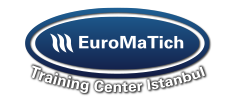Planning with Organizing and Controlling Projects
Overview:
Introduction:
This Planning with Organizing and Controlling Projects program is designed to equip those involved in project work with the essential skills needed to fulfill their responsibilities in a professional way. The concepts, methods, and techniques presented include both well established and latest thinking to provide the essential knowledge, skills, and toolkit to ensure more sustainable work environment. The methodology presented, offers a versatile approach that will enhance both individual and project performance.
Program Objectives:
At the end of this program the participants will be able to:
- Apply a professional, systematic approach to manage projects and project activities.
- Define the project scope, establish realistic objectives, and identify the relevant deliverables.
- Produce realistic project plans, determine the critical path, and manage project risks.
- Mobilize resources, accurately monitor project performance, and maintain control of the project.
- Recognize team dynamics within the project, play to strengths and manage weaknesses.
Targeted Audience:
- Delegates whose roles involve leading and directing projects.
- Project Professionals and those who are involved in carrying out project work assignments.
- Project Administrators, Supervisors and Support Staff.
- Those involved as Project Owners and Project Clients.
- Personnel working for Project Contractors and Suppliers.
Program Outlines:
Unit 1:
Reviewing the Fundamentals:
- Understanding Projects: Differences between Large / Small and Simple / Complex Projects.
- The ‘Project Life Cycle’ and the Role of Project Management.
- Current trends in Project Management: Project Management Associations and Qualifications.
- Project Performance: Understanding Why Some Projects Succeed and Others Don’t.
- A Framework for Building Project Success: Improving Project Management Performance.
- The Different Project Roles, Responsibilities and Boundaries: RACI Charts.
- Understanding some Key Financial Concepts: Break-even, Net Present Value, and Discounted Cashflow.
Unit 2:
Initiating and Defining Projects:
- Initiating Projects: Project Context and Environment.
- Setting Realistic Objectives: Defining Project Scope and Deliverables.
- Managing Expectations and Agreeing Priorities: Ensuring Value for Money.
- Developing a Work Breakdown Structure: Defining Roles and Specifying Work Packages.
- Developing a Cost Breakdown Structure: Techniques for Making Preliminary Estimates of Time and Cost.
- Choosing and using appropriate Planning Methods: Using Project Management Software.
- Initiating Risk Management: Using Qualitative Risk Analysis Techniques.
Unit 3:
Planning Projects for Results:
- Building a Realistic Project Plan: Using Gantt Charts and Activity Networks.
- Using the Plan to Develop Detailed Task and Resource Schedules.
- Identifying the Critical Path and Setting Milestones: Getting Buy-in from the Key Players.
- Techniques for Developing Detailed Estimates for Time and Cost: Managing Estimating Uncertainty.
- Minimizing Project Timescales: Exploring Time-cost Options and Understanding Trade-offs.
- Managing Project Risks: Quantitative Risk Management Methods and Techniques.
- The Importance of On-going Planning: Maintaining and Updating Plans and Risk Registers.
Unit 4:
Organising and Controlling the Project:
- Handling the Changes and Challenges that Affect Projects.
- Running Effective Change Control Processes.
- Project Performance Tracking, Management, and Control Systems.
- Pro-active and Re-active Control: Measures that Give Early Warning.
- Using Predictive Control Techniques: Slip Charts, Burn-down Charts, and Earned Value Methods.
- Managing Project Communication and Decision-making: Running Effective Meetings.
- Exploiting Information Management Technology: Managing Project Documentation.
Unit 5:
Project Leadership and Team-working Skills:
- Working in Project Teams: Building Collaborative Working Relationships.
- Understanding Leadership and Management: Qualities and Skills that Enhance Results.
- The Role of the Leader in Building Team Cohesion and Performance: The Team Development Cycle.
- . Implementing Continuous Improvement.


